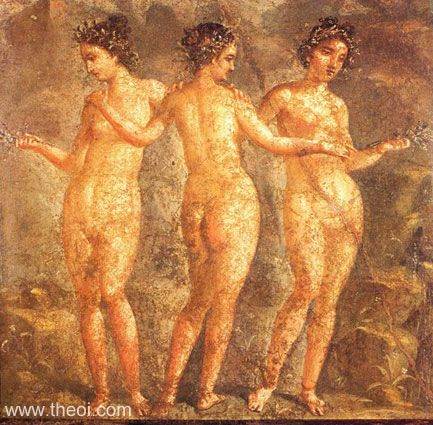
Kharites
The KHARITES (Charites), also known as the Graces, were three goddesses associated with grace, beauty, adornment, joy, mirth, festivity, dance, and song.
A group of younger Kharites oversaw various other pleasures of life, such as play, amusement, banquets, floral decoration, happiness, relaxati...
archaeologs EnglishMythology
EnglishMythology